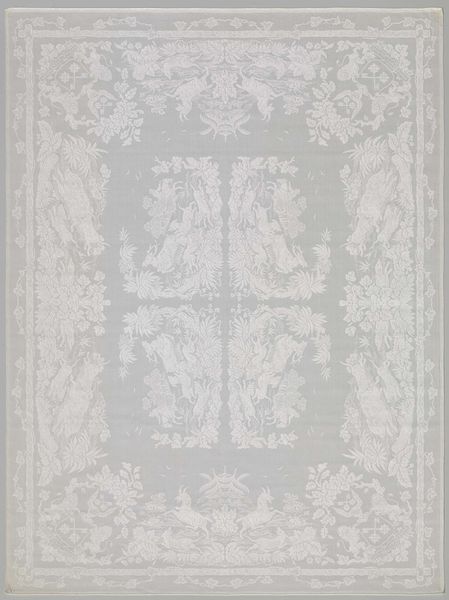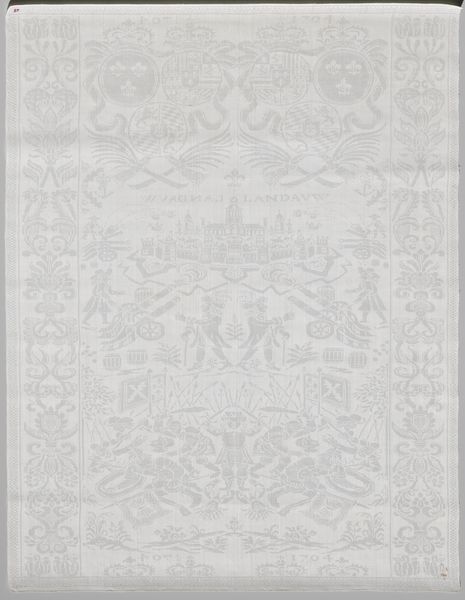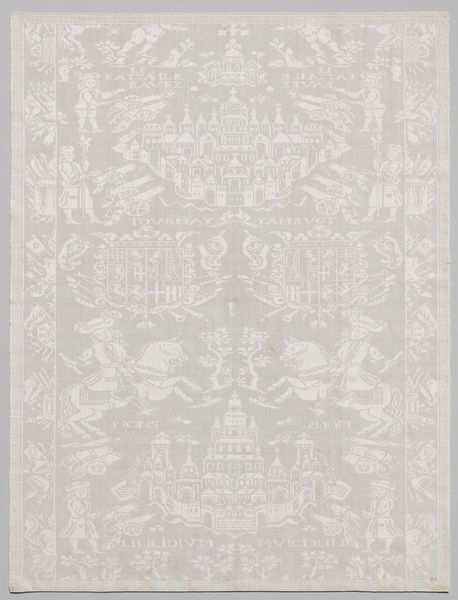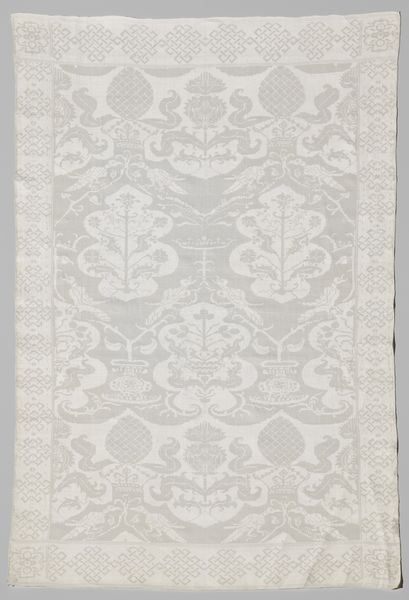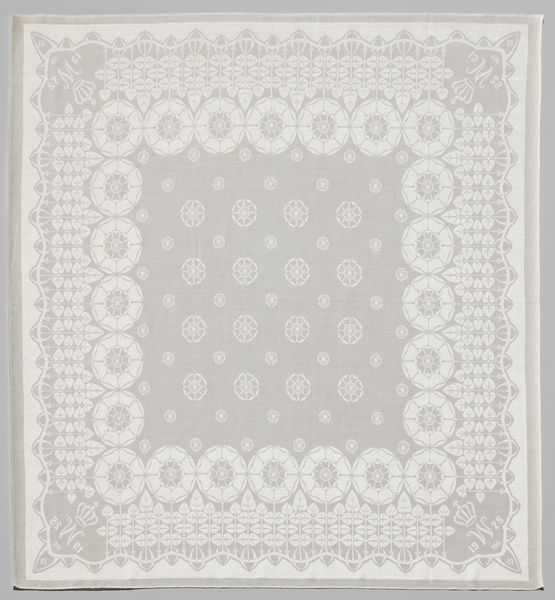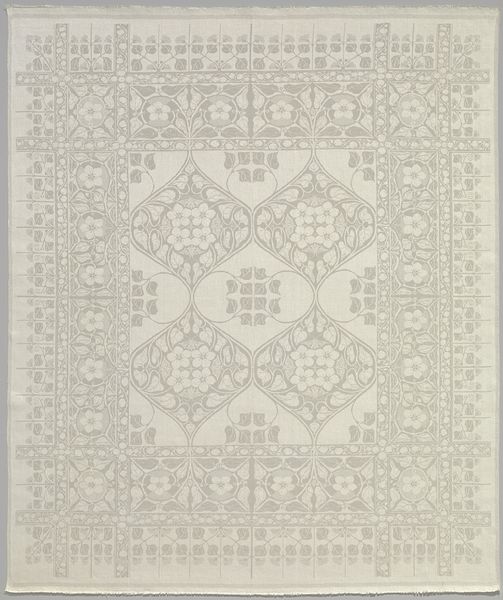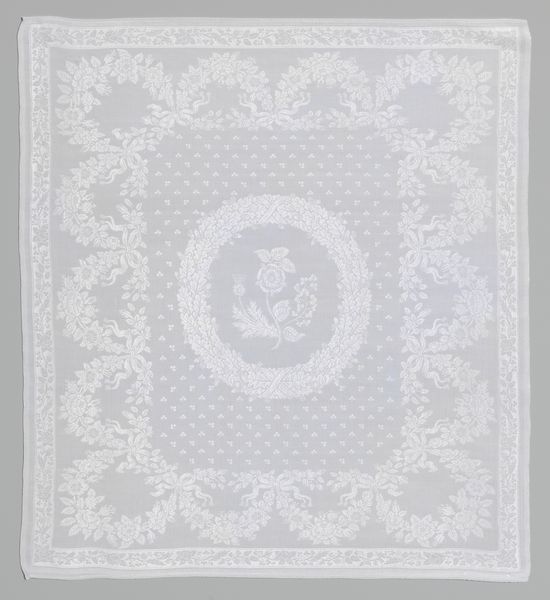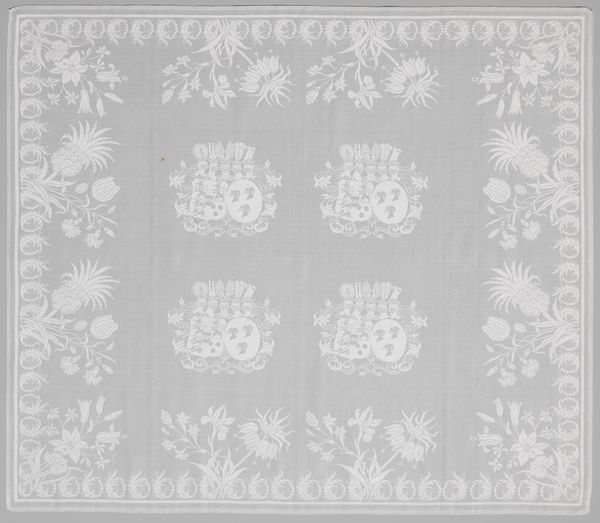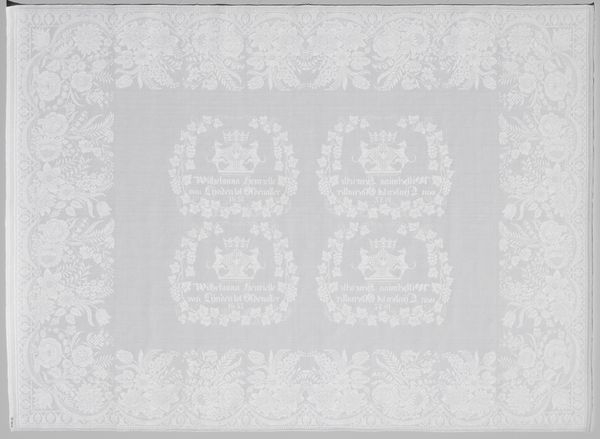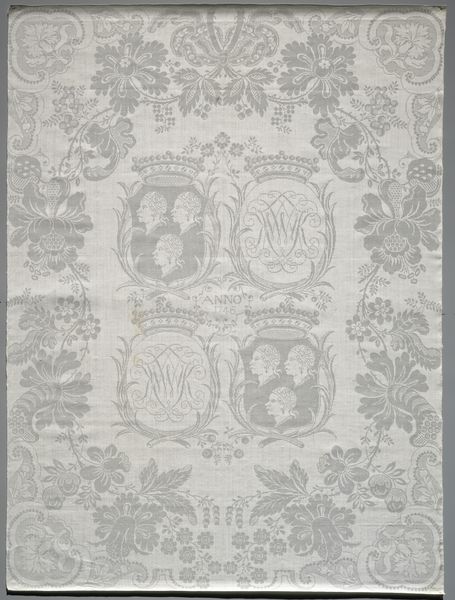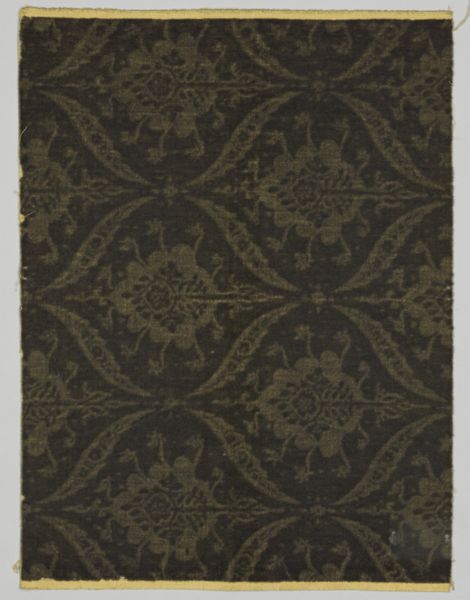
Servet van wit linnendamast, bloempatroon, de wapens Kops en De Vos, spiegelmonogrammen WPK en JDV en ANNO 1745 1745
0:00
0:00
weaving, textile
#
natural stone pattern
#
organic
#
weaving
#
textile
#
pattern making
#
fashion and textile design
#
pattern design
#
organic pattern
#
fabric design
#
pattern repetition
#
textile design
#
decorative-art
#
imprinted textile
#
layered pattern
#
rococo
Dimensions: height 122 cm, width 84 cm
Copyright: Rijks Museum: Open Domain
This linen damask cloth, featuring a floral pattern, coats of arms, and monograms, was likely made around 1745. The material of the cloth, linen, is critical to understanding its value. Linen damask is created on a loom with a Jacquard mechanism, which allowed for intricate, repeating patterns to be woven directly into the fabric. The weaving technique creates a subtle contrast between light and shadow, highlighting the floral motifs and heraldic symbols. The coats of arms and monograms woven into the design tell of the patron. These would have signified status and familial connections, turning the cloth into a symbol of social standing. Producing such a textile required skill and time, making it a luxury item. The very act of weaving becomes a performance of power and wealth. It challenges our traditional art categories by reminding us of the artistry embedded in everyday objects.
Comments
No comments
Be the first to comment and join the conversation on the ultimate creative platform.
